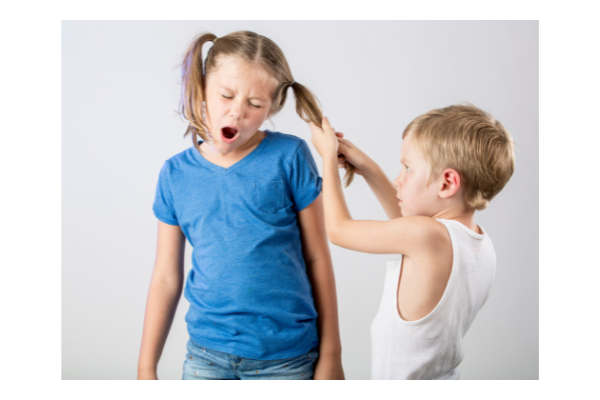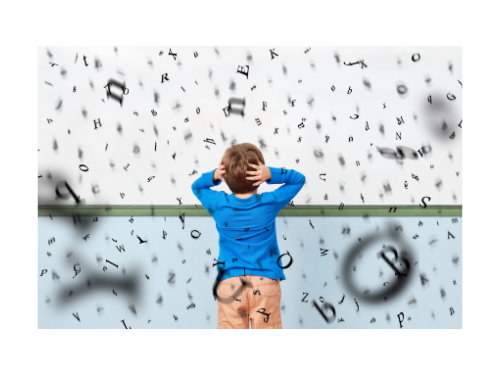Classroom behavior charts can be an effective tool in the classroom that can help teachers manage and promote positive behavior.
Classroom behavior charts provide a visual representation of student behavior, allowing both teachers and students to track progress and work towards specific goals.
When deciding which type of behavior chart to use, make sure to communicate with parents about the behaviors that you are seeing at school.
Partnering with and communicating with parents is a powerful way to help students improve behavior.

Behavior charts in the classroom
When using behavior charts in the classroom, it is important to teach students about what you expect from them. If a child is calling out frequently, practice having your student raise their hand and wait to be called on.
If a child isn’t using respectful words with peers, practice and model how to use respectful words.

Reinforcement
After you have taught and practiced the appropriate and expected behaviors with your students, pair the selected behavior chart with reinforcement to keep the positive behaviors going.
Reinforcement can be earning stickers, special time with peers, extra play time, earning break time, getting recognition in front of the class, special notes home to parents, school wide reinforcement procedures, small treats, etc.
The possibilities for reinforcement are endless, and don’t have to cost much money.
You can gather information from your student with a reinforcement survey, to identify what is motivating to your student.

Types of Classroom Behavior Charts
Daily Behavior Report Card
The Daily Behavior Report Card is a simple yet effective behavior chart that allows teachers to track and monitor student behavior on a daily basis.
Charts can also go home daily, which give parents insight into their child’s behavior that day.
Daily behavior report cards are most helpful when there are specific behavioral goals, such as “following directions, staying on task, and treating others with respect”. You can choose whatever behaviors to target that your student needs the most support with.
Older students (ex. 2nd grade on up), can be rated on each goal using a numerical rating scale such as “0= Never,” “1=Sometimes,” or “2=Usually/Always.”
| Name: | Date: | 0= Needed 2 or more reminders1= needed 2 or fewer reminders2= needed 0 reminders | |
| I followed directions | I stayed on task | I used respectful words | |
| Morning | 0 1 2 | 0 1 2 | 0 1 2 |
| Mid Morning | 0 1 2 | 0 1 2 | 0 1 2 |
| Afternoon | 0 1 2 | 0 1 2 | 0 1 2 |
| Points earned | |||
| Goal: | Did I earn 80% of my points for the day? Yes/ No | ||
If you have younger students, or students who are nonverbal, it may be more effective to use smiley faces, such as 🙁, 🙂, 😀 to rate behavior.
| Name: | Date: | 🙁= Needed 2 or more reminders😀= needed up to 1 reminder | |
| I followed directions | I stayed on task | I used respectful words | |
| Morning | 🙁 😀 | 🙁 😀 | 🙁 😀 |
| Mid Morning | 🙁 😀 | 🙁 😀 | 🙁 😀 |
| Afternoon | 🙁 😀 | 🙁 😀 | 🙁 😀 |
| I earned 😀faces! | |||
| Goal: | ____________ 😀 faces for the day! | ||
Weekly Behavior Report Card
The Weekly Behavior Report Card provides a broader overview of student behavior over the course of a week.
It allows teachers to track progress and identify patterns in behavior.
This type of chart would be helpful for students who do not have daily struggles with behavior. The chart would be filled out at the end of the day by the teacher.
| Name: | Week Of: | 0= Needed 2 or more reminders 1= needed 2 or fewer reminders 2= needed 0 reminders | |
| I followed directions | I stayed on task | I used respectful words | |
| Monday | 0 1 2 | 0 1 2 | 0 1 2 |
| Tuesday | 0 1 2 | 0 1 2 | 0 1 2 |
| Wednesday | 0 1 2 | 0 1 2 | 0 1 2 |
| Thursday | 0 1 2 | 0 1 2 | 0 1 2 |
| Friday | 0 1 2 | 0 1 2 | 0 1 2 |
| Points total | |||
| Goal: | Did I earn 80% of my points for the week? Yes/ No | ||
| Name: | Week Of: | 🙁= Needed 2 or more reminders😀= needed up to 1 reminder | |
| I followed directions | I stayed on task | I used respectful words | |
| Monday | 🙁 😀 | 🙁 😀 | 🙁 😀 |
| Tuesday | 🙁 😀 | 🙁 😀 | 🙁 😀 |
| Wednesday | 🙁 😀 | 🙁 😀 | 🙁 😀 |
| Thursday | 🙁 😀 | 🙁 😀 | 🙁 😀 |
| Friday | 🙁 😀 | 🙁 😀 | 🙁 😀 |
| Goal: | ____________ 😀 faces for the week!! | ||
Self Monitoring Chart
Self monitoring is a powerful way for students to start to understand and track their own behavior!
Self Monitoring is best used with children who have some insight into their behavior.
Research supports that when students can help keep track of their own progress, and are able to see the progress they are making, that they are more likely to continue to make progress and improvements.
Self monitoring charts can be effective for students who struggle with attendance. The teacher keeps this chart in a place the child can see, and when the child comes in they can cross off that day.
Remember to pair this with reinforcement, and set a criteria for when the student can earn the reward.
For example, if your student has only attended 1 day out of every week, make the reward for them attending two days of the week. Then when they meet that criteria, up the criteria to 3 days out of the week, etc.
As the child attends school more, you can increase the criteria to more days in order to earn the reinforcement. If the child’s attendance begins to decline again, check in with parents and the student, and see if it is necessary to decrease the days needed to earn reinforcement again.
| My attendance chart for the month of : | Make an x on each day you attend! | |||
| 1 | 2 | 3 | 4 | 5 |
| 6 | 7 | 8 | 9 | 10 |
| 11 | 12 | 13 | 14 | 15 |
| 16 | 17 | 18 | 19 | 20 |
| 21 | 22 | 23 | 24 | 25 |
Self monitoring charts can also be helpful to decrease unwanted classroom behaviors, such as calling out.
This self monitoring chart would go on the students desk, and they would monitor their own instances of calling out.
If the student didn’t mark the instance of calling out, the teacher would help them to mark it, and remind the student to mark it on their chart.
| Name: | Date: | ||
| Tally each instance of calling out | |||
| Morning | |||
| Mid Morning | |||
| Afternoon | |||
| How many tallies? | |||
| Goal: | Did I have 5 or fewer tallies for the day? Yes/ No | ||
Productive Learning Environments
Implementing a behavior chart in the classroom can be a valuable tool for promoting positive behavior and creating a productive learning environment. With efficient behavior charts, teachers can effectively track and monitor student behavior, provide targeted interventions, and foster a positive classroom community.
Remember, behavior charts should be used as a supportive tool, and it’s important to pair them with other positive behavior management strategies and interventions to ensure the success of all students.







